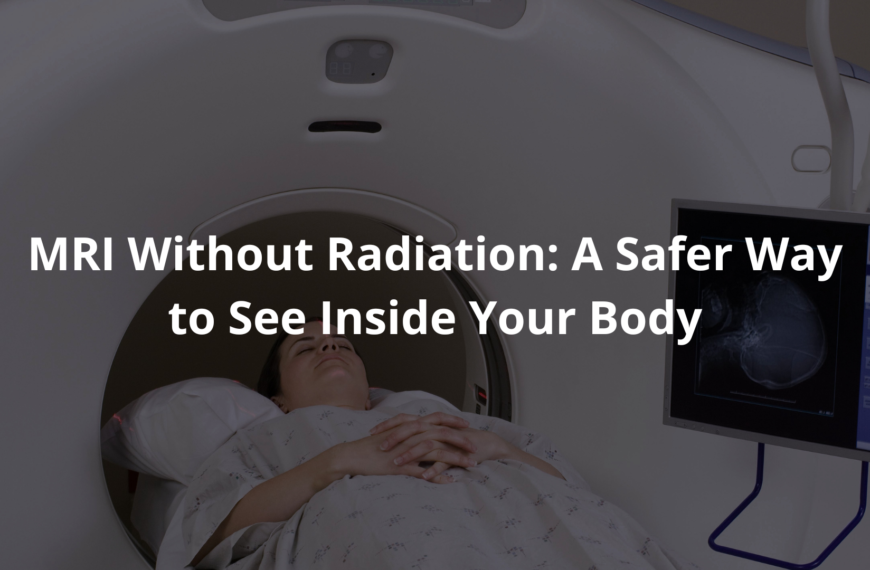Explore how radiation-free paediatric scans like MRI and ultrasound keep kids safe while getting the care they need.
Paediatric scans, radiation-free ones, are a big deal for kids’ health, aren’t they? Doctors need to see what’s happening inside, but, radiation? No thanks.
Ultrasound’s a go-to; it bounces sound waves (high-frequency ones, actually) to create images. Safe and effective. MRI’s another option. It uses magnets and radio waves. Amazing detail, but it can take longer, requires the little patients to stay really still.
This is why radiation-free scans are vital; they avoid any radiation risks, especially for young, growing bodies. They provide clear imaging, supporting accurate diagnoses. Making for safer treatments, too. More to learn, though. Keep reading.
Key Takeaway
- MRI and ultrasound are safe imaging methods that don’t use radiation.
- Australian guidelines encourage these methods to protect children’s health.
- These scans help doctors get the best pictures of kids’ insides without any risks.
Understanding Radiation-Free Imaging Modalities
Magnetic Resonance Imaging (MRI)
A kid in a big machine—it’s not what you expect to see at a hospital, is it? But that’s kinda what an MRI is. Magnetic Resonance Imaging, or MRI (using strong magnets and radio waves), is used to peek inside the body. Good news is: no radiation’s involved, which is a relief. The Royal Australian and New Zealand College of Radiologists (RANZCR) reckons if a kid’s under six, an MRI is usually the top pick, if they don’t need a sleep (sedation).
- It’s a beaut way to find stuff going wrong in the soft bits, like the brain and spine—vital stuff, that.
- Safe, too, because it gives a clear picture of soft tissues. Detailed imaging helps make sure there’s a quick diagnosis.
But, here’s a heads-up: it’s not always the quickest option. If there’s a real urgent problem, a CT scan (Computed Tomography) might still be the go-to. MRIs aren’t usually a first-line diagnostic imaging tool in emergency situations; there’s often just not enough time. So, an MRI is a detailed and mostly safe look but mightn’t be the speediest.
Ultrasound
Sound waves, not just for music anymore. Doctors use them to have a look inside our bodies, it’s called an ultrasound. It doesn’t use radiation, which is another win. It is a way for doctors to check out what’s going on in a kid’s tummy, look at their bones, or even check their brains.
- Quick as a flash, ultrasounds are.
- They can spot what’s wrong without causing any pain, which is tops.
Ultrasounds are often the first thing they try, especially with babies. Because it’s non-invasive. Kids don’t have to worry about needles or anything scary. It’s a simple method of imaging which is a massive advantage. So, if your doctor suggests an ultrasound, don’t stress, it’s a safe and easy way to take a look inside.
Key Australian Guidelines and Practices

RANZCR Recommendations
Doctors need to be on the right track when it comes to kids and scans, and the Royal Australian and New Zealand College of Radiologists (RANZCR) is there to point the way. They’re pretty clear on it. MRI over CT, if you can swing it.
- Use MRI (magnetic resonance imaging) when you can, instead of CT scans. Less radiation, safer for the young ones.
- Prep the kids for the MRI. Videos, practice runs, anything to keep them calm.
- Low-dose CT scans (Computed Tomography) only as a last resort. (When MRI or ultrasound won’t cut it.) [1]
It’s all about keeping the little tackers safe while figuring out what’s going on inside them. Makes sense, doesn’t it? It’s about balancing the need to diagnose with the need to protect.
ARPANSA and Safety Initiatives
The Australian Radiation Protection and Nuclear Safety Agency (ARPANSA) and other groups? They are all about keeping our kids safe from radiation, especially when it comes to medical imaging. They are really pushing MRI and ultrasound (using sound waves) to minimise any potential harm. It’s a big deal.
- ARPANSA is big on MRI and ultrasound.
- They offer training and information to doctors and parents alike. [2]
They’ve got the “Radiation Protection of the Patient module,” that teaches everyone how to stay safe during scans. Plus, the Australian Commission on Safety and Quality in Health Care made brochures that are really helpful to understand about CT scans for kids. Knowledge is power, especially when it comes to health.
Implementation Challenges
Accessibility
Living in the Outback has its perks, but getting a fancy MRI scan isn’t always one of them. Sometimes, you’re stuck with what you’ve got.
- MRI (magnetic resonance imaging) machines aren’t everywhere.
- Emergencies happen.
In smaller towns, it’s not uncommon to not have that capability. Doctors might have to use CT scans because they don’t have other options, even when they’d rather not. (It’s all about what’s available, not always what’s ideal.)
Sedation Risks
Putting a little one to sleep (sedation) for an MRI can be necessary. It’s kinda like when the machines take too long to process the information from the machine, they will move and blur the image. However, it’s not without its risks. Doctors have to tread carefully. (It’s a balancing act, for sure.) Very young kids might need to be put to sleep for an MRI. It’s a challenge, working out the best and safest path.
Australian guidelines are big on the radiation-free approach, though. They get that CT scans (Computed Tomography) are sometimes unavoidable. RANZCR (Royal Australian and New Zealand College of Radiologists) and ARPANSA (Australian Radiation Protection and Nuclear Safety Agency) are putting in the effort to develop effective imaging choices for kids.
Why Choose Radiation-Free Imaging?
Credits: Rad Tech Hub by Medical Professionals
Why bother with MRI (magnetic resonance imaging) or ultrasound (using sound waves) when X-rays are so quick? Well, it’s all about the little ones, isn’t it? Choosing radiation-free imaging, for the kiddos, helps cut down risks, radiation can have long-term effects, and kids are more sensitive than grown-ups.
- Long-term safety is the number one priority: Less radiation equals healthier kids down the line.
- These scans (MRI or ultrasounds) are generally less scary for kids. It is easier for them to get the care they need because of this.
- The image quality, they give great pictures that help doctors understand what’s wrong
So, it’s about getting the info they need (diagnostic imaging) without exposing those little bodies to anything risky.
Fun Facts About MRI and Ultrasound
Ever wondered what it’s like inside those big machines? The long magnetic resonance imaging (MRI) session can take up to 45 minutes! Isn’t that something? Ultrasounds are used to see babies before they’re even born. Think about that for a minute.
FAQ
What are radiation-free imaging options for children, and why are they important?
Radiation-free imaging includes MRI (magnetic resonance imaging), ultrasound (sonography), and white-light scanning. These non-ionising techniques are preferred for children because kids are more sensitive to radiation.
Their developing bodies and longer life expectancy make them more vulnerable to potential long-term effects of radiation exposure. Using radiation-free methods follows the ALARA principle (As Low As Reasonably Achievable) for radiation exposure minimisation, especially when children need multiple or follow-up scans.
How do MRI scans work for children, and when might they be used?
MRI uses powerful magnets and radio waves—not radiation—to create detailed images. It’s excellent for neuroimaging for children, musculoskeletal paediatric imaging, and showing soft-tissue contrast. MRI is particularly useful for conditions requiring functional imaging that shows how tissues are working, not just how they look.
For younger patients, the “feed and wrap” approach (feeding and swaddling babies to help them sleep during scans) can help achieve sedation-free scans. Advanced techniques like PROPELLER sequences can reduce motion artifacts.
What makes ultrasound a good choice for paediatric imaging alternatives?
Ultrasound (sonography) uses sound waves to create images, making it completely radiation-free. It’s ideal for paediatric abdominal scans, cardiac imaging in children, and can even detect some congenital anomalies. Modern handheld scanners make ultrasound even more child-friendly.
Ultrasound is also useful for paediatric vascular imaging and can be enhanced with microbubble contrast agents instead of radiation-based methods. It’s widely available, relatively low-cost, and doesn’t typically require sedation.
How are imaging techniques adapted to be more child-friendly?
Child-friendly scans incorporate several motion reduction strategies like respiratory gating, breath-holding techniques, and free-breathing methods. Paediatric-specific protocols adjust scan parameters for smaller bodies. Rapid imaging techniques reduce time children need to stay still.
For babies, the feed and wrap approach can help achieve natural sleep during scans. specialised equipment like thoracic coils sized for children improves image quality optimisation. These approaches help make diagnostic procedures less stressful for kids and families.
What advancements are making paediatric imaging safer and more effective?
Recent paediatric radiology advancements include high-resolution scans that provide better detail while maintaining safety. Techniques like diffusion-weighted imaging and perfusion imaging techniques offer functional information acquisition without radiation.
Photon-counting CT represents a breakthrough in dose reduction while maintaining or improving image quality. 3D visualisation helps doctors better assess conditions like pectus excavatum and other chest deformities. These technologies deliver detailed images while prioritising children’s long-term health.
How do radiation-free methods help with diagnosing specific childhood conditions?
Non-invasive diagnostics using radiation-free methods excel at evaluating many childhood conditions. MRI is outstanding for neuroimaging, showing brain development and detecting abnormalities. Ultrasound works well for paediatric abdominal scans and cardiac imaging. Both help with pulmonary disease imaging and mediastinal disease detection.
For congenital anomalies detection, these methods provide detailed images without radiation risks. Elastography in children, a specialised ultrasound technique, can assess tissue stiffness non-invasively, helpful for liver and other organ evaluation.
Are radiation-free imaging options available in all healthcare settings?
Access to safe diagnostic methods varies worldwide. While major children’s hospitals typically offer MRI and advanced ultrasound, portable scanning devices are expanding access to radiation-free options in economically disadvantaged regions.
Handheld scanners and accessible diagnostic tools are becoming more common in various settings, including emergency departments for paediatric emergency imaging. Cost-effective imaging strategies help balance quality care with resource constraints. The goal is making radiation-free options available to all children regardless of location or economic status.
Conclusion
Radiation-free scans (MRI and ultrasound) are safe ways for doctors to look inside a kid’s body. These imaging techniques are safe and keep kids away from radiation. They still give doctors the info needed to help. Australian guidelines support using them so kids get the best care. When in doubt, ask your doctor what scan works best for your child’s needs and situation.
References
- https://www.ranzcr.com/documents-download/doc_download/1675-paediatric-imaging-guidelines
- https://www.arpansa.gov.au/understanding-radiation/radiation-sources/more-radiation-sources/ct-imaging-and-children




